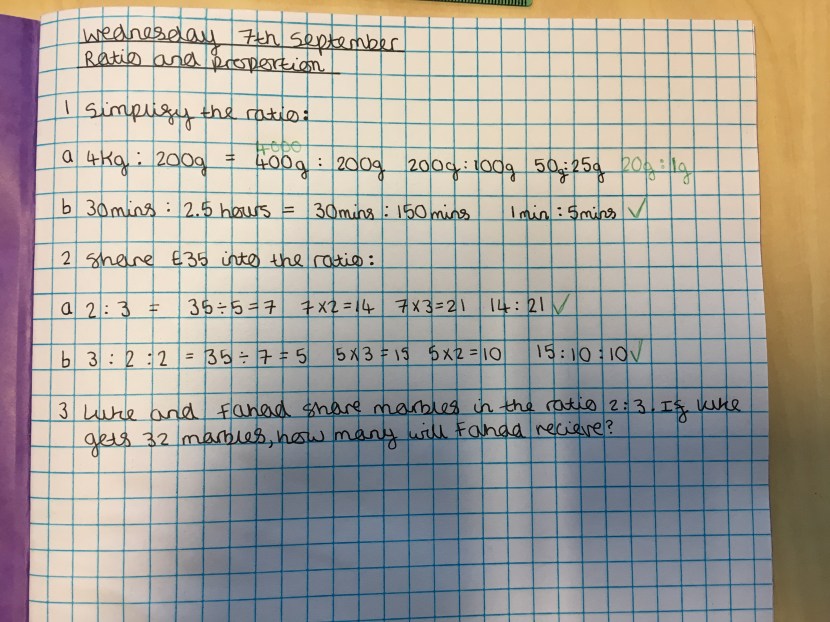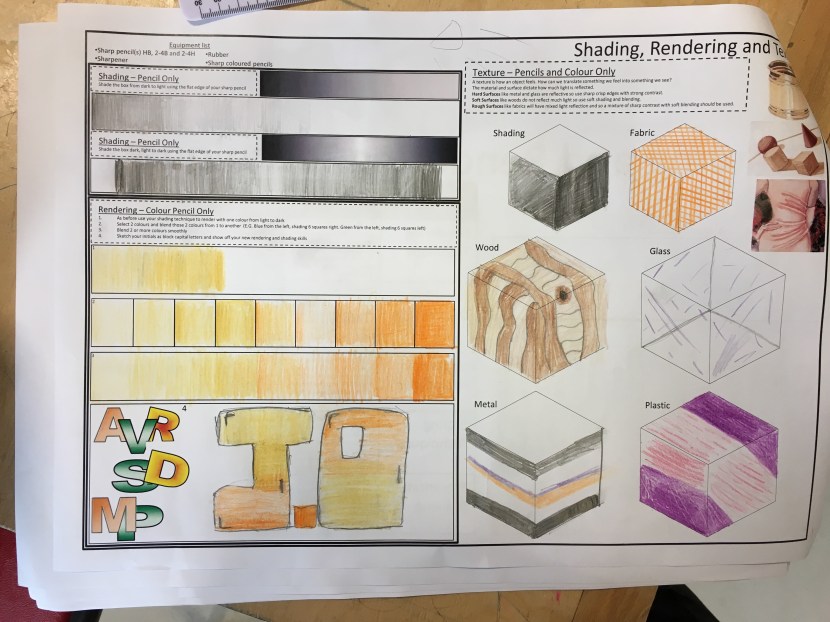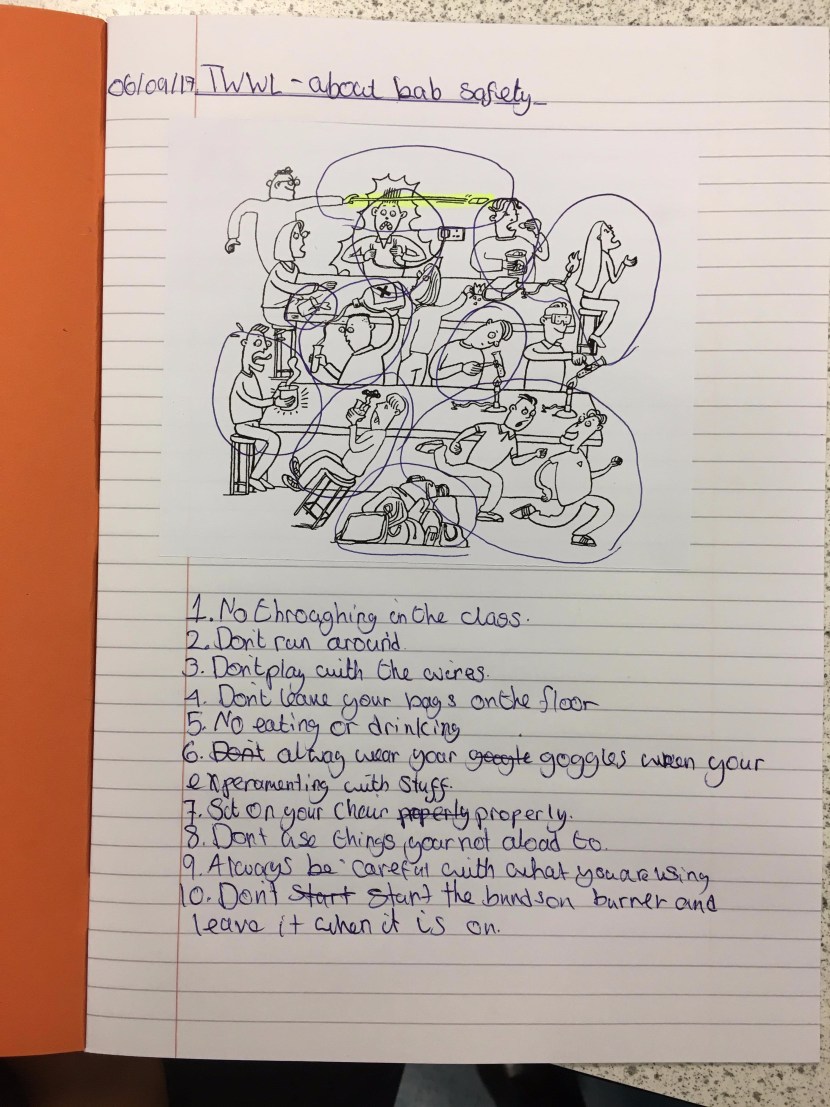Ms Harry (Drama) – Year 7 students were developing freeze frames for a specific genre of film. Ms Harry spent some time questioning students on their understanding of freeze frames and what great performance would look like in this area. What was interesting here was that after Ms Harry had asked a series of questions about what makes a great freeze frame she followed this up with what not to do and a series of questions on this theme. This was a great opportunity to check for common misconceptions and address these with the class. Students then went onto some focused practice in groups where they were developing a freeze frame of their choice. Whilst students were practicing Ms Harry circulated the groups providing further feedback and challenge that prompted students to think harder about what they were doing and why.
Miss Camwell (English) – Year 9 students were having a second attempt at a question following a recent assessment. Ms Camwell spent some time explaining to the class in precise detail what they needed to do and what her expectations of them were. Students were then giving time to practice whilst Ms Camwell then began giving 1-to-1 feedback to students. In student books it was great to see good use of memory platforms to get students retrieving information from memory (a great way to build long term memory). Feedback from students on this was really positive as it helped them to remember. Ms Camwell has also been trialling whole class feedback, making use of a crib sheet to collate common errors and misconceptions which then leads to a range of targets being generated that students can select (or sometimes this is selected for them) from.

Retrieval practice in English – students tested on their understanding of language.
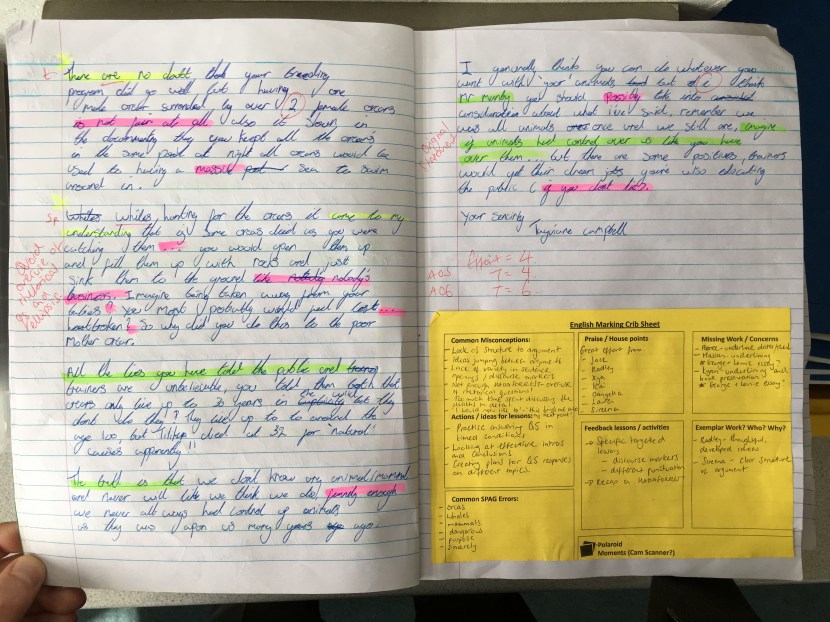
Whole class feedback in English – reducing workload whilst providing actionable feedback.
Mrs Zagani (Year 8 Pastoral leader) – This blog aims to not only celebrate the great work by teaching staff, but also the remarkable work of all staff from across the academy. Earlier this week Mrs Zagani supported a student who was finding things particularly difficult. Mrs Zagani spent time expertly dissecting what had happened with student before clearly (and concisely) presenting the options to the student. Her balance of compassion and support mixed with high expectations enabled the student to make the right decision. If you ever get the chance to spend some time with the pastoral team (in any academy) I would recommend it! There is a lot to learn about how our pastoral leaders interact with and uphold the high standards we expect from students whilst creating a caring, supportive and safe environment.
Ms Litchfield (English) – Year 8 students were working on a descriptive writing piece. This piece of work had recently been the subject of feedback from Ms Litchfield. She is currently trialling whole class feedback using a crib sheet to track common errors and misconceptions (something the English team have adopted). Following the completion of a crib sheet, Ms Litchfield then uses this information to generate targets (see form below) and a space for students to act on this feedback. The targets are really specific so instead of re-drafting a whole essay students are given a specific bit to improve. This approach has drastically reduced the time it has taken to mark & feedback to students and the level of response from students has impressed Ms Litchfield!
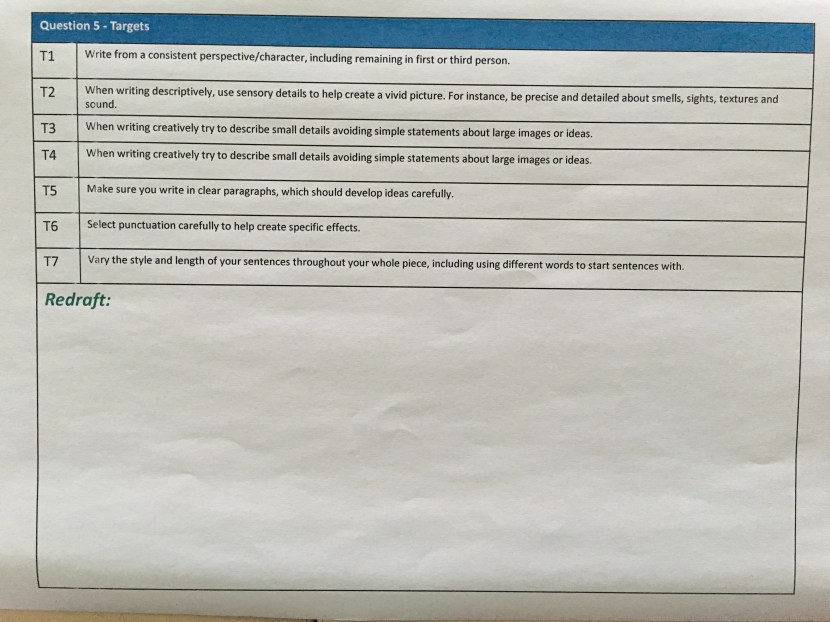
Following whole class feedback students are provided with a selection of targets to choose from and then a space to complete the target.
Miss Ridgway (English) – Year 9 students were looking into gender stereotypes associated with Macbeth. Miss Ridgway gave students a series of examples and students were asked to give their opinion (using their prior knowledge of stereotypes) and provide examples of gender stereotypes. One student gave a fantastic response where he explained the gender stereotypes related to toy shops and that boys toys tend to be blue and girls toys tend to be pink. Miss Ridgway used questioning to explore student answers further and challenge their thinking. Looking at some student books it was great to see more memory platforms and spelling tests (extended so that students not only recall the correct spelling but also the meaning of the work).
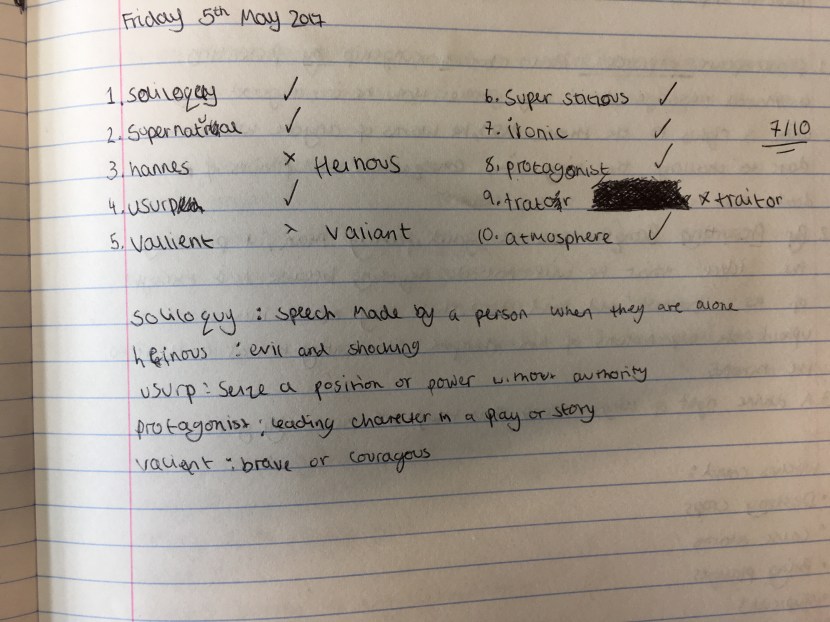
Memory recall of spellings and their meanings in KS3 English.

More knowledge recall in KS3 English. Building a secure knowledge base so that students can develop their analytical writing.
Ms Harvey (Science) – Year 7 students were investigating an experiment into heat transfer. As students were conducting a practical experiment, Ms Harvey was circulating the room ensuring students were safe but also questioning and challenging students on what they were doing and why. Following the experiment students were supported to write an evaluation that explained whether or not their hypothesis had been proved and what was the scientific evidence to support this. Looking through student books it was great to see some examples of regular low stakes quizzing, end of topic quizzes and students acting on feedback regarding SPAG. Feedback from students on the usefulness of the regular quizzing was really positive as it was helping them to remember more which was breeding confidence.

Retrieval practice in year 7 Science.

End of topic test in year 7 Science

SPAG feedback in year 7 Science.
Mr Gandon (Science) – Year 13 Physics students were working through some practice questions. They had previously spent some time developing their vocabulary and building knowledge so that they could apply this to questions. Mr Gandon modelled well making use of his whiteboard to walk students through how to complete a particular equation. He was then able to circulate the group, draw out misconceptions and re-teach to smaller groups where needed.

Technical vocabulary in year 13 Physics.

Mr Gandon modelling an approach to solving an equation to come to the conclusion that a KG is in fact a KG!
Mr Leahy (Maths) – I managed to see Mr Leahy twice this week. The first time was during a year 10 (top set) Maths lesson. Mr Leahy’s direct instruction was fantastic – clear, concise and challenging. He used a mixture of explanation, live modelling of worked examples and questioning to explain a new topic and get students to make links to prior knowledge. Following instruction, students were then given time to practice (in silence so that they could concentrate). Whilst students were working Mr Leahy circulated the room providing verbal feedback and looking for misconceptions. After spotting a few students making the same mistake, he paused the class and re-taught a section explaining the misconception and modelling the correct process.
The second opportunity to see Mr Leahy came during a walking/talking mock for year 11 students. This is a fantastic way to prepare students for an upcoming exam (student feedback on these have been really positive). Mr Leahy taught from the front, giving students time to attempt questions before live modelling the meta-cognitive approach for solving each question before arriving at the correct answer. He took this opportunity to also highlight common misconceptions and address these with the group (60+ students!).

Mr Leahy conducting a walking-talking mock for 60+ year 11 students. Purposeful practice at its best!
Mrs Taylor Evans (Art) – During the Art departments feedback review I had the opportunity to sit down with Mrs Taylor-Evans and look through lots of student work and discuss the impact of feedback on student work. The majority of feedback in art is delivered verbally as students are creating, so it was great to discuss the progress students are making and see how their work has developed over time. The quality of work produced by students is exceptionally high which is a testament to the feedback students receive in lessons.






